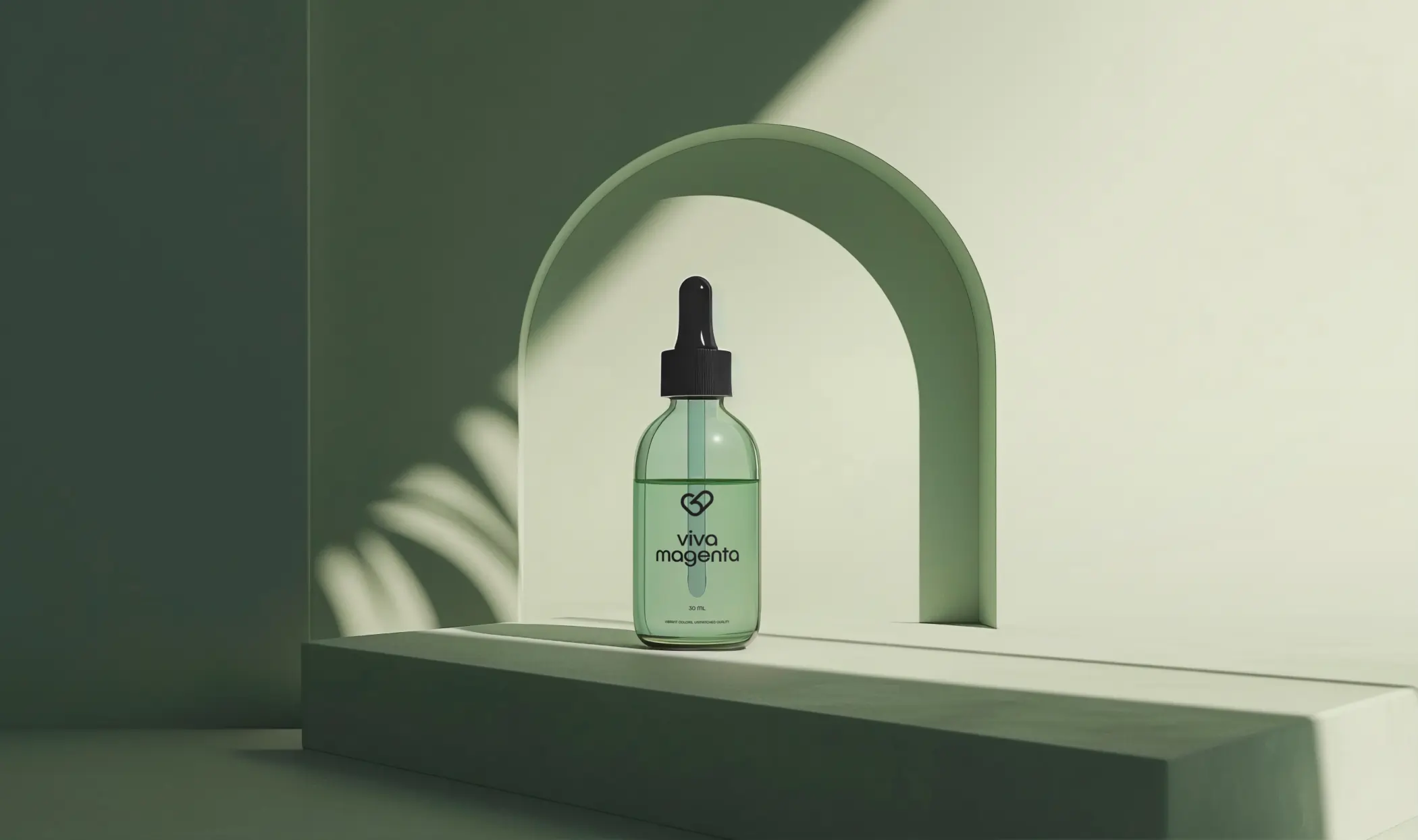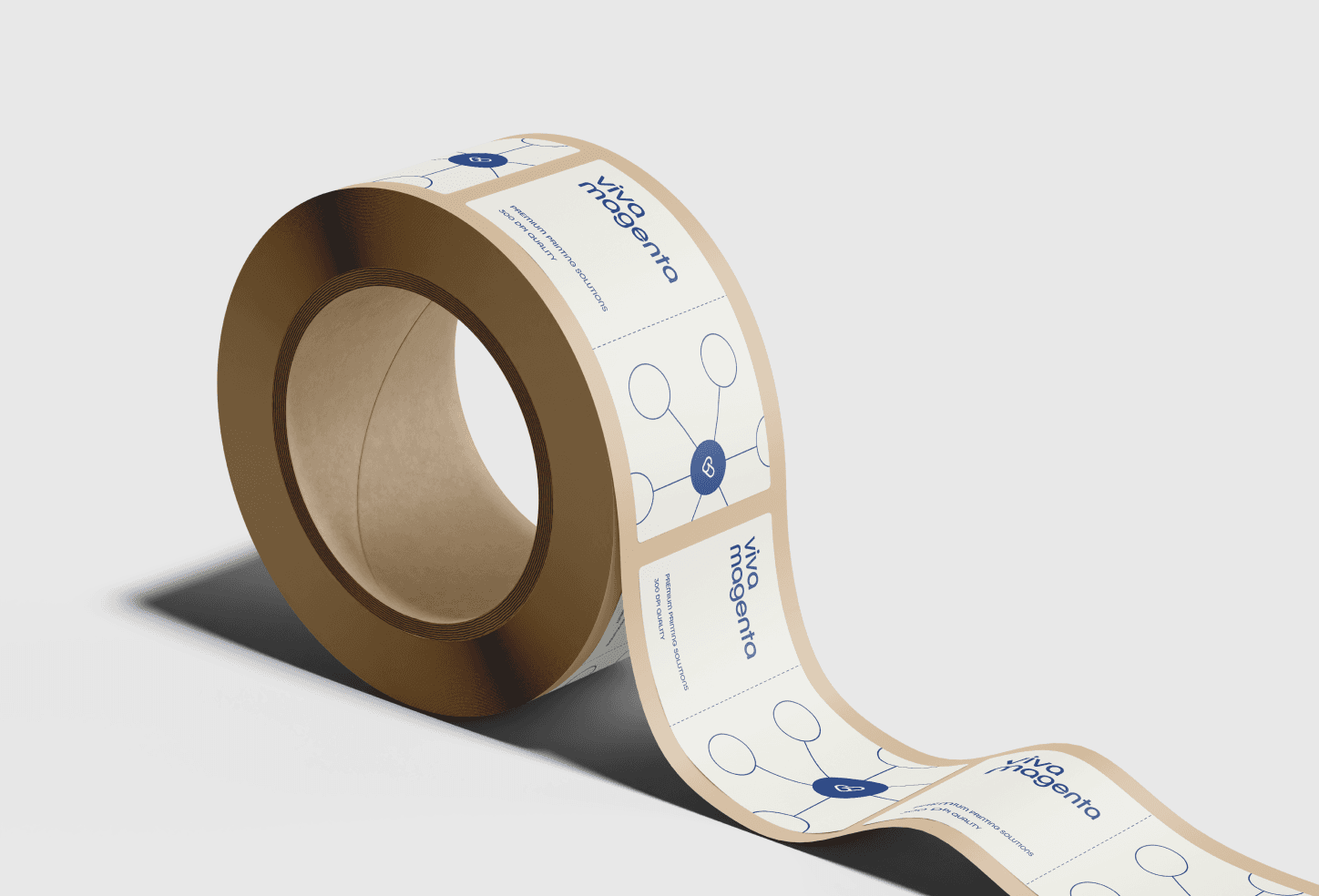Cosmetic Label Size Guide
Creating the perfect cosmetic label is essential for both branding and compliance. The right label enhances your product's appearance and displays all necessary information clearly and accurately. This can build customer trust and make your products stand out on the shelf.
Choosing the correct size and shape for your labels is a critical step in the packaging process. The label must fit the container perfectly while accommodating all required details, such as ingredients, usage instructions, and regulatory information. Moreover, it should reflect your brand's unique style, making a lasting impression on consumers. By understanding the importance of the right label size, you can feel informed and confident in your labelling decisions.
This comprehensive guide will explain everything you need to know about selecting the right label size for your cosmetic products. We’ll cover various container types, from jars and bottles to tubes and tins, and provide specific size recommendations for each. We'll also discuss design tips to ensure your labels are functional and visually appealing. So, let's dive in and explore how to create the perfect cosmetic labels for your brand.
How to correctly label cosmetic products?
Regulatory requirements for cosmetic labels in the UK:
The following guidelines are based on the UK Government's regulations for cosmetic products. It's important to note that these requirements are specific to the UK, and for the latest information and updates, producers should check the UK Government's website. For other countries, local regulations should be checked to ensure compliance.
Name and Address of the Responsible Person: Every cosmetic product must display the name and address of the person or company responsible for the product. This ensures accountability and provides customers with a point of contact.
Country of Origin: If your product is imported into the UK, it must include the country of origin. This helps customers identify where the product was made.
Weight or Volume: The label should clearly state the product's weight or volume. This information is essential for consumers to know how much product they purchase.
Expiry Date: Including an expiry date informs consumers of the product's shelf life and ensures they use it while it's still effective and safe.
Precautions and Ingredients: It's important to list any precautions for use and the ingredients. If space on the packaging is limited, this information can be included within the packaging, such as on a leaflet, with a symbol indicating its location.
Identification Number: An identification number, such as a batch number, is necessary for tracking and quality control.
Product Function: Clearly state what the cosmetic product does, ensuring no misleading claims are made about its characteristics or functions.
How do I make my own packaging labels?
Choosing the right label size and shape
Selecting the appropriate label size and shape for your cosmetic products is a critical step in packaging. The right label fits your container perfectly and enhances the overall aesthetic and functionality of your product packaging.
Factors influencing label size and shape:
Type of Container: The size and shape of your container significantly influence your label choice. Different containers, such as jars, bottles, and tubes, require different label dimensions to ensure a snug fit and optimal display.
Branding and Design Aesthetics: Your label is a key part of your brand identity. It should be designed to attract customers while fitting seamlessly with your overall brand image. Consider how the label’s size and shape complement your product’s design.
Practical Considerations: Consider the ease of application and cost-effectiveness of your labels. Some labels may be more cost-effective but difficult to apply, while others might be more expensive but easier to manage. Balance your budget with practicality to choose the best option for your needs.
Common label shapes and sizes:
Full Wrap-Around Labels: These labels cover the entire circumference of the container. They work well with 3-panel designs, where the left and right panels can include directions for use and ingredients, leaving the middle panel for your brand and sales message. Full wrap-around labels are cost-effective but can be tricky to apply.
Front and Back Labels: This design separates the branding message on the front from the regulatory information on the back. Though this method can be more costly due to multiple designs and printing setups, it is easier to apply manually. Front and back labels are ideal for providing detailed information without cluttering the primary branding area.
Lid Labels: Sometimes, a simple lid label with sealing arms is sufficient, especially if the container is aesthetically pleasing. Lid labels are an excellent way to provide necessary information without covering the entire container. They are easy to apply and can add a minimalist, elegant touch to your packaging.
After deciding on the label style that suits your packaging, you need to consider the specific shape and size of the label you will use. Standard template shapes and sizes are the most cost-effective choice, including round, square, oval, and rectangular stickers in various sizes. Custom labels can be made for unique packaging needs, offering a bespoke and high-end feel, albeit at a higher cost.
Label Size Guide for Popular Cosmetic Containers
Choosing the right label size for your cosmetic containers ensures that all necessary information is visible and the label fits the product well. Here’s a detailed size guide for various popular cosmetic containers:
Cosmetic Jars:

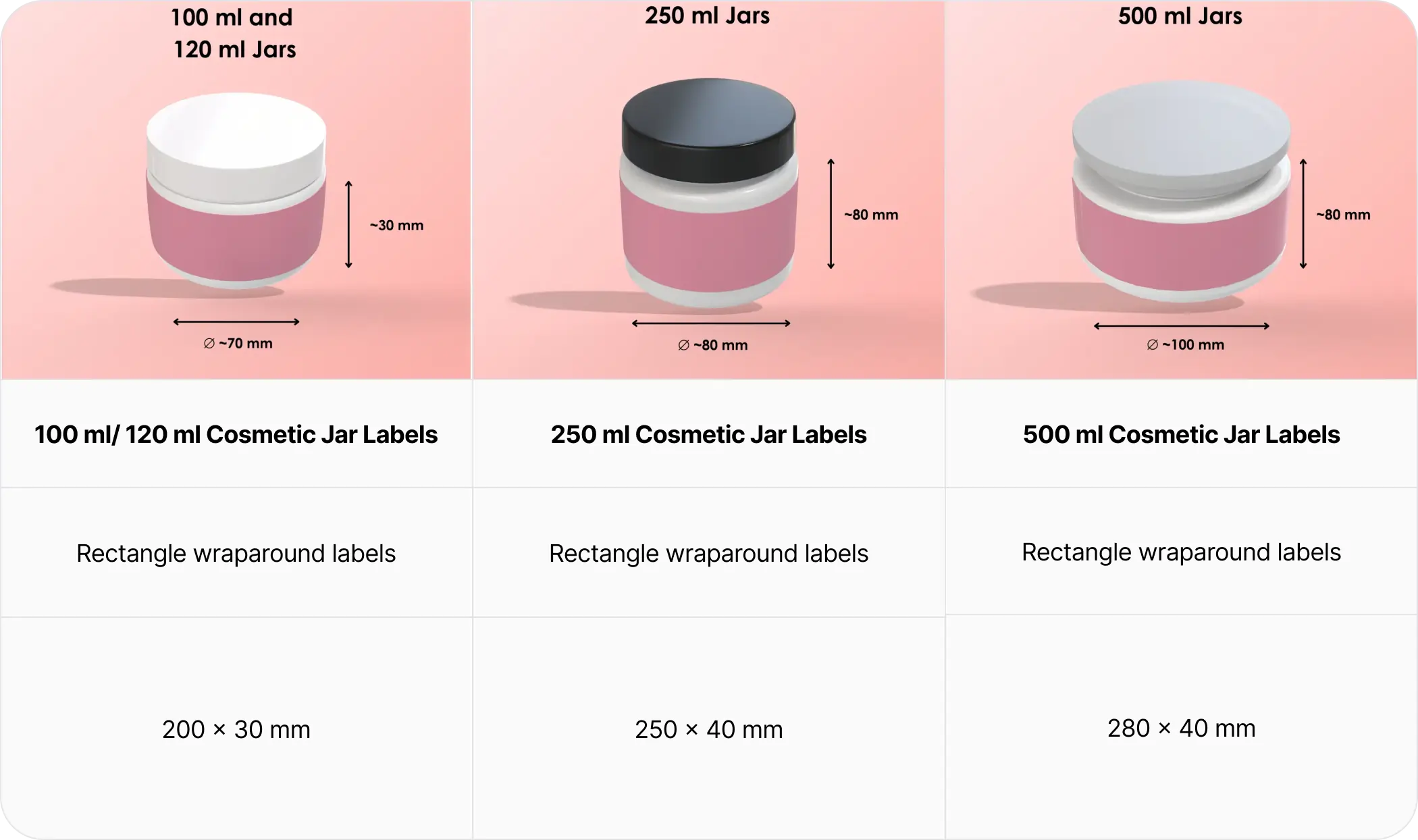
Dropper Bottles:
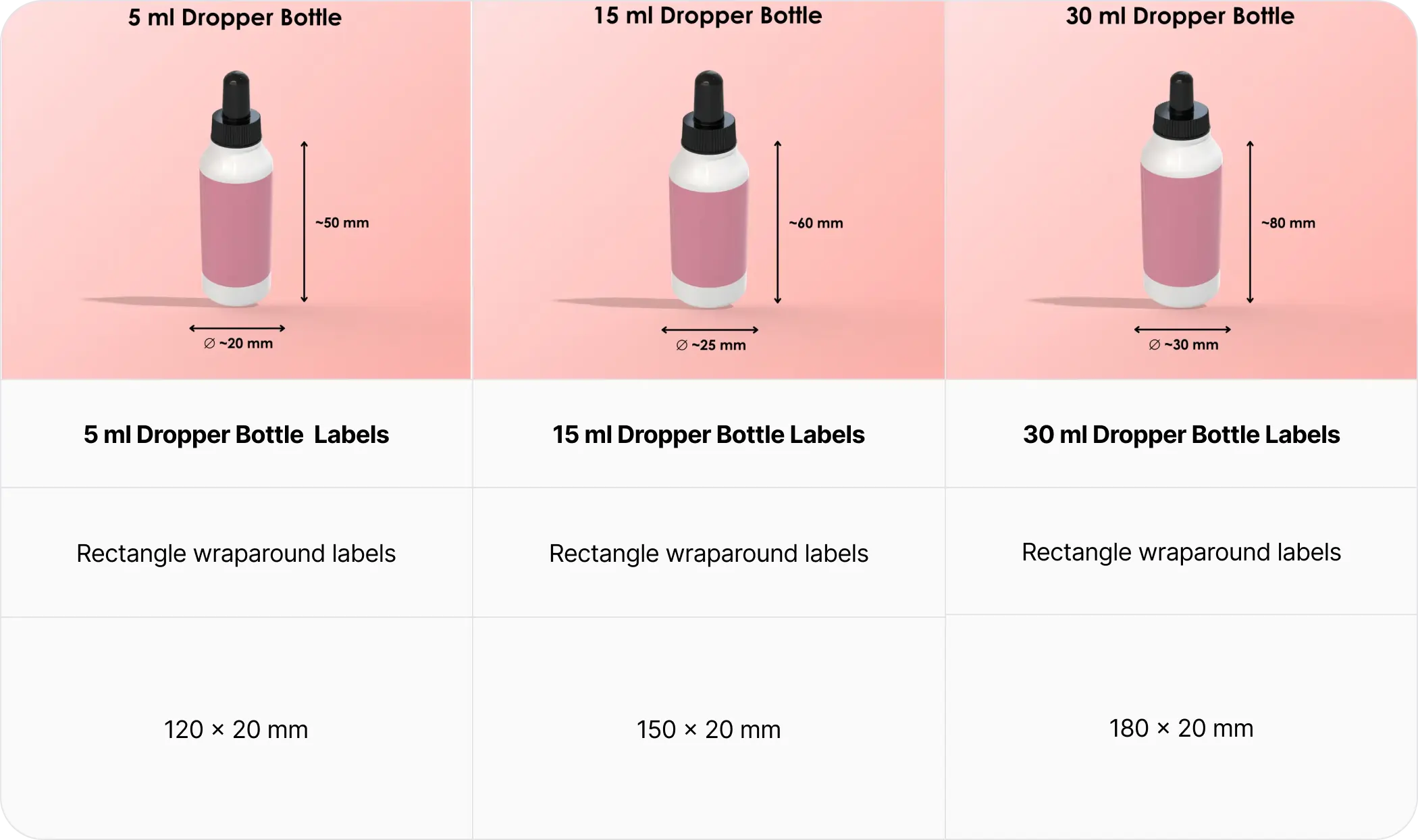
Cosmetic Bottles:

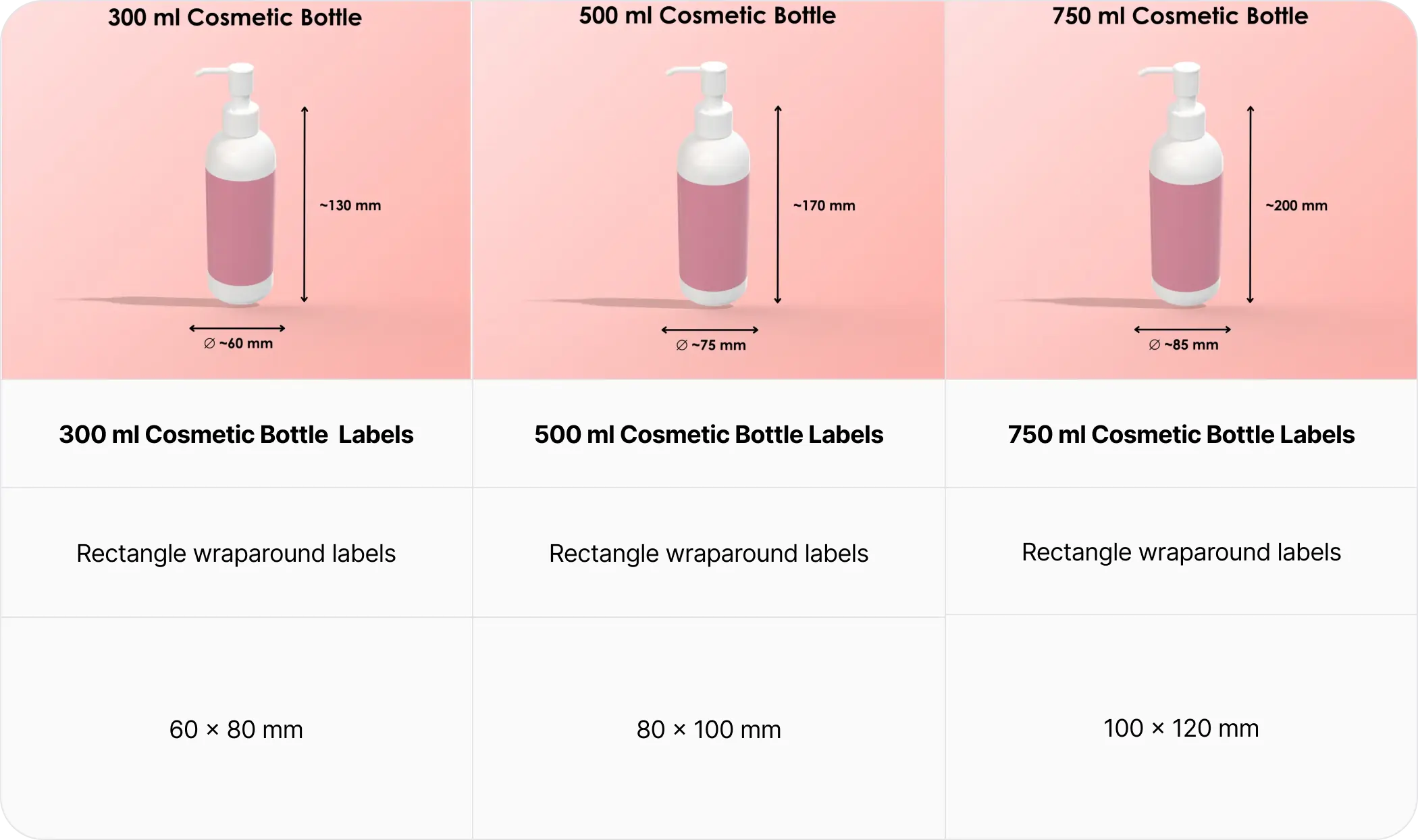
These recommended sizes ensure that your labels will fit perfectly and look professional, helping to convey your brand's message effectively.
How to design labels for cosmetics?
Designing cosmetic labels requires a balance of creativity, functionality, and compliance. Here are some best practices to ensure your labels are both effective and attractive:
Highlighting Brand Identity:
Consistent Branding: Use colours, fonts, and imagery that align with your brand aesthetic. Consistent branding helps in building brand recognition and loyalty.
Logo Placement: Ensure your logo is prominently placed on the label. It should be easily visible and instantly recognisable.
Visual Hierarchy: Organise the information on your label to draw the eye to the most important elements first. Use size, colour, and spacing to create a visual hierarchy.
Ensuring Legibility and Readability:
Font Selection: Choose fonts that are easy to read. Avoid overly decorative fonts for important information. Stick to clean, simple fonts for readability.
Font Size: Ensure the text is large enough to be read easily. Key information, such as the product name, should be in a larger font size than less critical details.
Colour Contrast: Use high-contrast colour combinations for text and background to improve readability. For instance, dark text on a light background or vice versa.
Using High-Quality Materials:
Durable Labels: Select materials that can withstand the conditions your product will be exposed to, such as moisture, oil, and varying temperatures. Waterproof and oil-resistant labels such as polypropylene labels, clear labels and metallic labels are particularly beneficial for cosmetic products.
Finishes: Consider using finishes like matte, gloss, or metallic to enhance the visual appeal of your labels. A matte finish can give a sophisticated look, while a gloss finish can make colours pop.
Eco-Friendly Options: If sustainability is part of your brand's values, consider using eco-friendly label materials. Recycled paper and biodegradable adhesives can appeal to environmentally conscious consumers.
Including Essential Information:
Regulatory Compliance: Ensure your labels include all legally required information, such as ingredients, usage instructions, and precautions.
Clear and Concise Messaging: Avoid cluttering your label with too much text. Keep your messaging clear and concise to maintain a clean and professional look.
Call-to-Action: If applicable, include a call-to-action that encourages customers to interact with your brand, such as visiting your website or following your social media accounts.
Design Tools and Resources:
Templates: Utilise design templates to streamline the creation process. Templates ensure that your labels meet size requirements and can be easily customised with your branding.
Professional Help: If design isn’t your strong suit, consider hiring a professional graphic designer. A well-designed label can significantly enhance your product’s appeal.
By following these tips, you can create cosmetic labels that are not only compliant with regulations but also visually appealing and reflective of your brand’s identity.
To Wrap Up
Choosing the right size and design for cosmetic labels is crucial for compliance and branding. The right label ensures that all necessary information is visible and that the product looks professional and appealing to consumers. By following the guidelines and tips in this guide, you can make informed decisions about your labels that enhance your product's appeal and ensure compliance with regulatory standards.
Visit Viva Magenta Project’s website for more information and to explore our customisable packaging options. We offer bespoke packaging solutions that cater to your brand’s unique needs.
